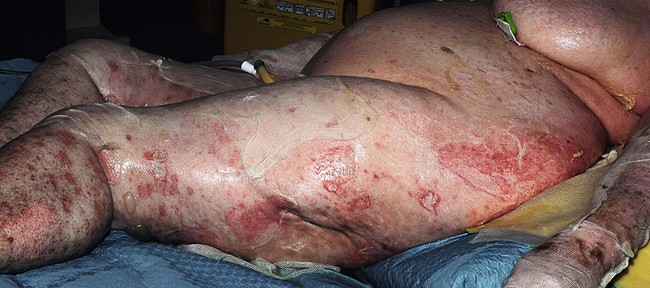Rzany B, Mockenhaupt M, Stocker U, Hamouda O, Schöpf E. Arch Dermatol 1993; 129: 1059. HIV testing should be considered for high-risk patients presenting with TEN/SJS.
Toxic epidermal necrolysis and Stevens–Johnson syndrome

Specific investigations
Incidence of Stevens–Johnson syndrome and toxic epidermal necrolysis in patients with the acquired immunodeficiency syndrome in Germany.
Toxic epidermal necrolysis and Stevens–Johnson syndrome




 Supportive measures
Supportive measures Withdrawal of culprit drug
Withdrawal of culprit drug Analgesia
Analgesia Bioengineered skin substitute
Bioengineered skin substitute

